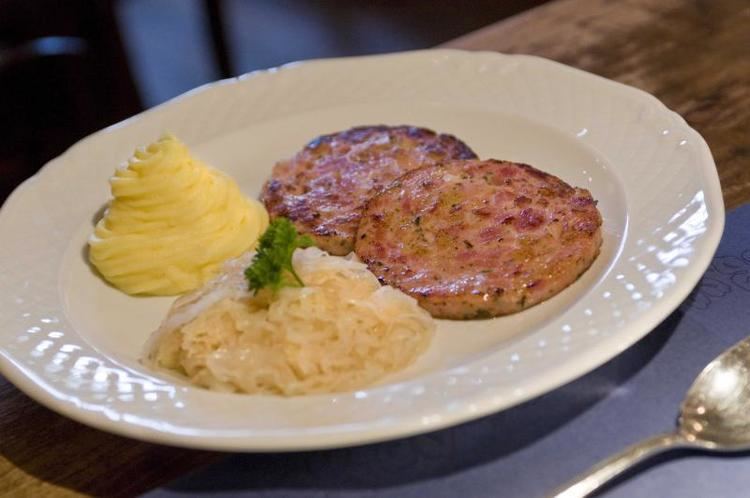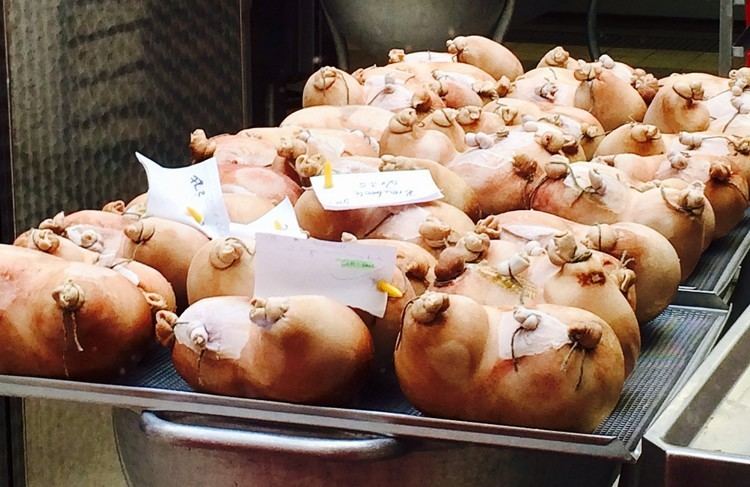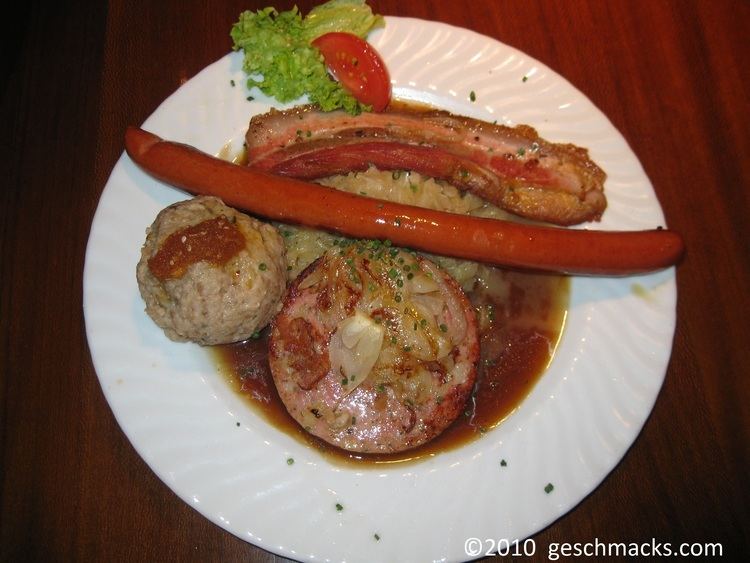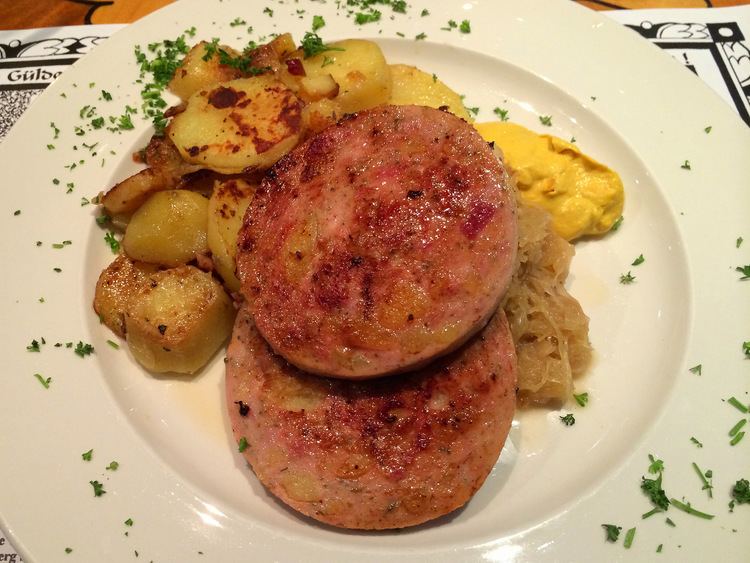 | ||
Similar Leberknödel, Potato, Pork, Head cheese, Liverwurst | ||
Kochen mit globus pf lzer saumagen als carpaccio
Saumagen is a German dish popular in the Palatinate. The name means "sow's stomach". The dish is similar to a sausage in that it consists of a stuffed casing; however, the stomach itself is integral to the dish. It isn't as thin as a typical sausage casing (intestines or artificial casing). Rather it is meat-like, being a strong muscular organ, and when the dish is finished by being pan-fried or roasted in the oven, it becomes crisp. The dish is somewhat similar to the Scottish haggis, although the stuffing is quite different.
Contents

Saumagen
Stuffing

Saumagen stuffing consists of potatoes, carrots and pork, usually spiced with onions, marjoram, nutmeg and white pepper, in addition to which, various recipes also mention cloves, coriander, thyme, garlic, bay leaf, cardamom, basil, caraway, allspice, and parsley. Sometimes beef is used as well; a variant popular in autumn replaces some or all of the potatoes with chestnuts. The larger ingredients are diced finely. After that, the saumagen is cooked in hot water, slightly below boiling temperature to prevent rupture of the stomach. It is either served directly with sauerkraut and mashed potatoes or stored in the refrigerator for later use. To warm it again, the saumagen is cut into slices approximately 1⁄2 to 1 inch thick (1.3 to 2.5 cm), which are then fried in an open pan. The typical accompanying drink is - in the wine region of the palatinate - usually a dry white wine, in the Palatinate forest to the west preferable a local beer.
History

Saumagen was created in the 18th century by Palatinate farmers who used leftovers to make a roast dish for those without the financial means to afford a joint of meat. Today the Saumagen offered by German butchers uses high quality ingredients. Louise Wilhelmine Henninger[16] (1871–1951), cook and landlady at the Weinhaus Henninger in Kallstadt, is said to have elevated Saumagen to a culinary delight. The dish lends its name to a Riesling vineyard in Kallstadt as "Saumagen Kallstadt".

Helmut Kohl, the German chancellor from 1982 to 1998, loved Saumagen and had it served to visiting premiers, including Margaret Thatcher, Mikhail Gorbachev, Ronald Reagan and Bill Clinton. Kohl came from the Palatinate and his enthusiasm for the very local dish brought it to a wider public. Some Germans viewed this attachment as a sign that Kohl was unsophisticated and provincial.

The Schlotte Carnival society in Schifferstadt has awarded the Order of the Saumagen since 1992. Landau hosts a Saumagen-competition, the Internationale Pfälzer Saumagen-Wettbewerb. Uniqe receipes include e.g. fish or deer stuffing. The first laureats, Imke Bruns and Iris Wittmann are now members of the jury.
Dutch Goose

In the Pennsylvania Dutch region of the United States, the dish, known locally as seimaage, hogmal, stuffed hog maw ("maw" is an old word for stomach), simply pig stomach, or Dutch goose (by those who are not Pennsylvania Dutch) is popular during the harvest season. Traditionally, pig stomach, not turkey, was the main course for Thanksgiving among Pennsylvania Dutch families. This tradition stems from the Old World, with the bulk of Pennsylvania Dutch settlers originating from the Palatinate. Unlike the German version, the dish is typically baked for several hours, rather than boiled.
